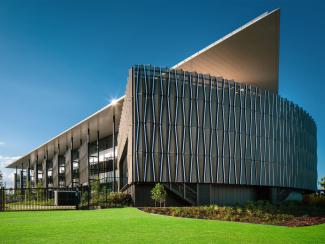
MISTRA-EC
The MISTRA Environmental Communication (MEC) Research Programme is a four-year research project, based in Sweden and implemented by an international consortium, which includes the Institute of Communication Studies and Journalism at the Faculty of Social Sciences at Charles University. MEC's overarching aim is to reframe Swedish environmental communication, i.e., to mainstream an advanced and inclusive understanding of environmental communication in research, policy and practice such that it can effectively underpin and foster sustainability transformations. MEC draws on a transdisciplinary approach that involves researchers from a range of disciplinary backgrounds as well as non-academic partners representing crucial actors in wider society to harness existing thinking, co-develop new insights and approaches and translate these into communication practice.
The MEC research programme addresses five major fields of environmental communication practice. These include (i) government-led dialogue, (ii) consumption, (iii) science and knowledge co-production, (iv) organisational networks in market contexts and (v) arts and the media and form the basis of MEC's work package structure. In addition, MEC is also a participatory research project, that aims to involve stakeholders in all its research stages; these stakeholders include the Swedish Environmental Protection Agency, Sweden's Forestry Agency, the Federation of Farmers, Greenpeace, environmental consultancies, artists, media representatives and museums, and many other authorities, NGOs and businesses.
The MEC research programme is hosted by the Swedish University of Agricultural Sciences (SLU) and involves academics at SLU, Uppsala University, Lund University, Borås University, the University of the Sunshine Coast in Australia, the University of Texas at Austin and Charles University. Importantly, the consortium also includes 28 societal partners, covering a wide range of environmental and sustainability concerns and perspectives – from climate action to nature conservation, hunting and agriculture, and from the local to the national and international level. This website communicates the activities of the team at Charles University, based at the Institute of Communication Studies and Journalism (ICSJ).
The Institute of Communication Studies and Journalism at Charles University is one of the partners of the MISTRA Environmental Communication (MISTRA-EC) Research Programme. At ICSJ, they do research on the communication of environmental and sustainability issues in Swedish arts and media. They are particularly interested in the discursive struggles between the different environmental and sustainability discourses that circulate in Swedish arts and media. In addition, we work on developing strategies to open up existing discursive patterns and constellations for a constructive engagement with new or marginalised perspectives. Moreover, they focus on how materiality intersects with these discourses on the environment, looking at how the material is entangled with the discursive, and how the material can play a primary role in dislocating particular discourses, but also in how the material invites particular discourses to be assembled with it. A third research strand focuses on the participatory dimensions of the MEC Research Programme itself, investigating how in this research programme, with its large number of societal partners, the power relations between academic and non-academic team members are organised, and can be further equalised through a series of participatory tools. Finally, the ICSJ team is researching and deploying the capacities of arts-based research to communicate academic research about the environment.
(1) produce work relevant to the Mistra Environmental Communication research programme,
(2) produce one blog post for publication in Mistra Environmental Communication research media channels
(3) showcase (a selection of) the work produced during the AiR@USC at the end of the AiR@USC
(4) feature selected work from the AiR@USC in one collective AiR@MISTRAEC exhibition in late 2023
While their team is able to provide advice, orientation and some practical support, the artist themselves must organise transportation and accommodation for the duration of the AiR@USC.
All output created by the artist remains their intellectual property.
The residency is located on the Sunshine Coast, Queensland, Australia.



